
How to Measure Wet Film Thickness
Wet film thickness can be measured in a variety of ways. To measure the amount of oil in our cars, we use an instrument named a 'dipstick'. Using an adaptation of this simple technique, the coatings industry use combs and wheels to accurately measure the wet film thickness.
The Wet Film Comb
There is a wide range of comb styles and materials available. A wet film comb is typically a hexagonal or rectangular flat object with a series of teeth along each edge.
Occasionally referred to as notch gauges, wet film combs are available in a variety of materials. Stainless steel combs are the most hard-wearing and accurate, whilst the aluminium combs can be punched from a sheet, reducing the cost but also the accuracy. Plastic combs offer a low cost, quickly produced option which can be kept as a permanent record.
Wet film combs have different measuring scales along each edge. The hexagonal combs have the advantage of having six different scales on one comb, whilst the long edge, rectangular combs allow for more teeth along each edge, resulting in greater resolution.
The various scales available range from 20µm through to 10,000µm. This enables the measurement of a variety of coatings such as paint on a metal substrate through to fibreglass layers and road markings. A scale should be chosen within which the expected or required wet film thickness falls.
The comb is held vertically and placed into the wet paint with the outer teeth of the chosen scale making contact with the substrate or previous coating.
Each scale consists of a number of teeth, each shorter than the previous tooth. The “gap” below the teeth increases by a fixed amount between each pair of teeth.
When the comb is removed from the paint, the teeth that were long enough to reach the paint will be coated at the end. Those that remain above the paint will have no coating on them.
The thickness of the paint lies between the value of the shortest tooth to be coated and the adjacent tooth which will be the longest tooth to be uncoated.
Some training organisations recommend that the last tooth to be coated (225 um in the picture below) be recorded as the WFT.
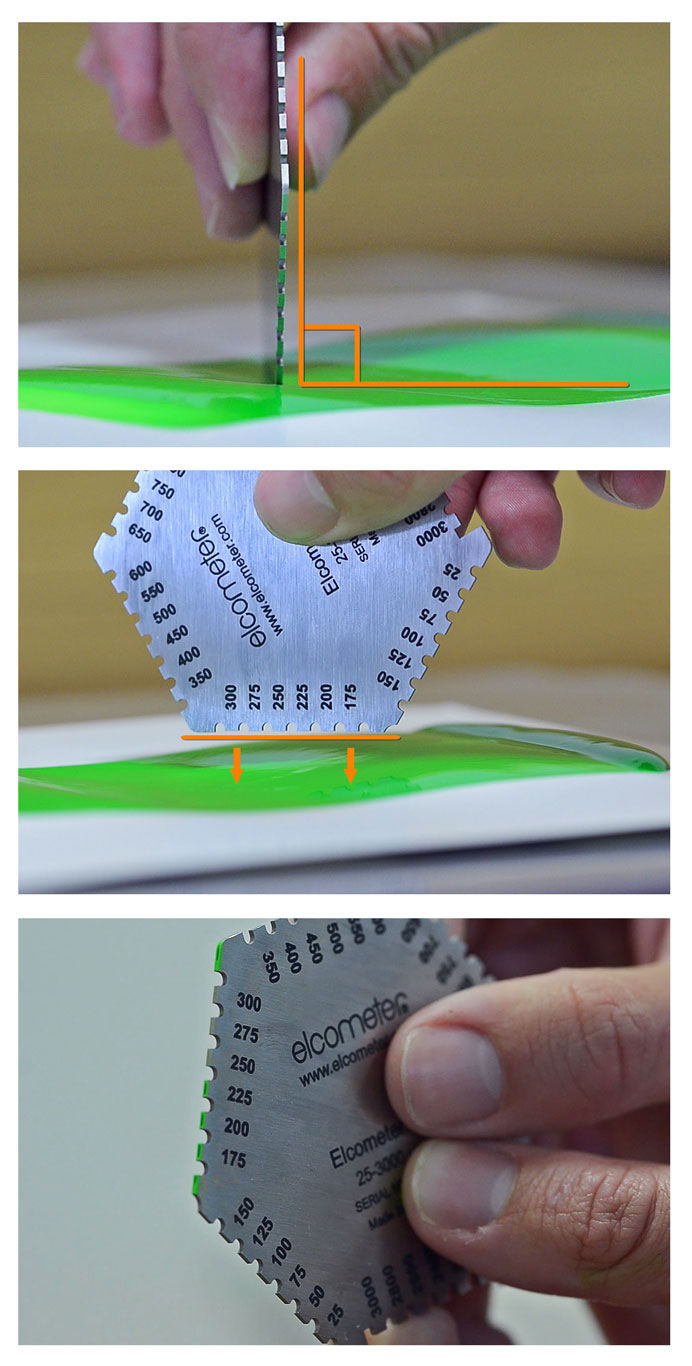
Edges and Sharp Corners
Wet film combs also feature a 2mm radiused notch. This is for coatings which are applied near to edges or sharp corners. Coatings will creep backwards, away from the edges when applied, leaving less coating. This affords less protection and corrosion takes place more quickly in these areas.
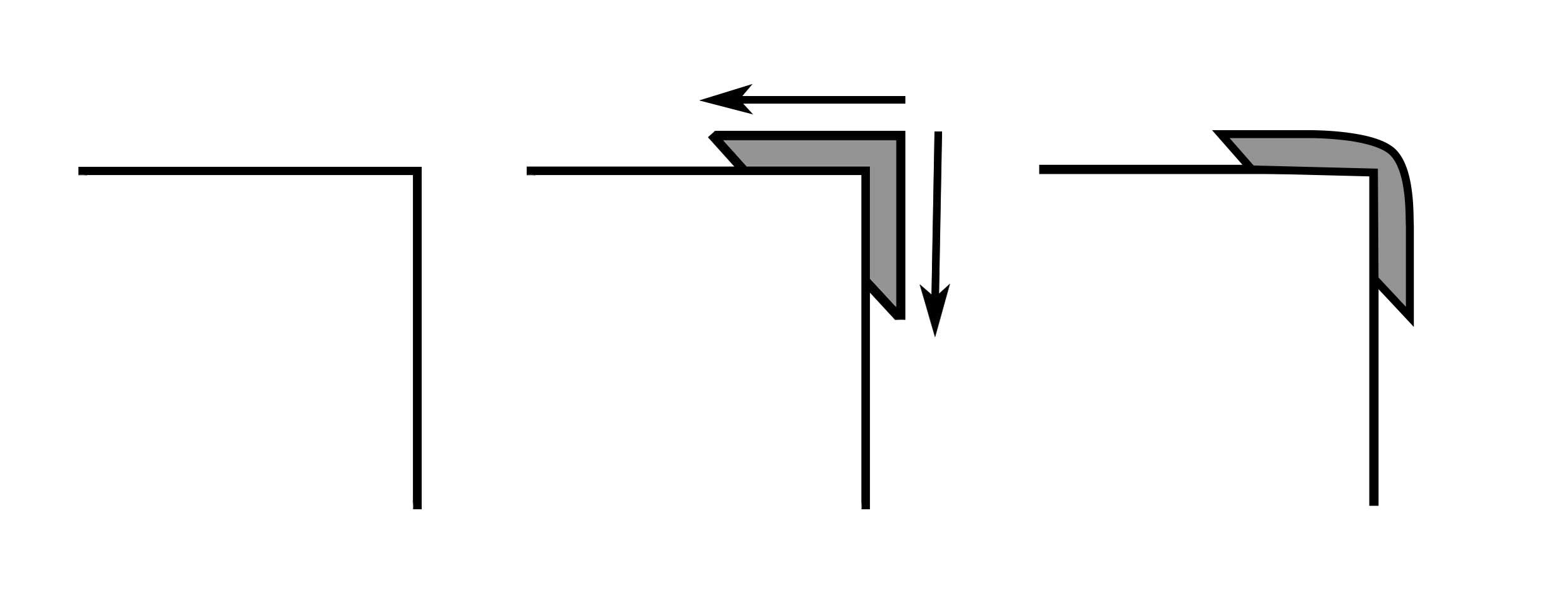

In order to overcome this problem, there are three options. The first option is to stripe coat the edges, manually, with a brush or roller. The other options involve altering the geometry of the edges. Option two is to carry out a three-pass grind to produce an angled radius
Option three is to produce a true radius, often by grinding, to give a minimum 2mm radius at the edge. The radiused notch in the wet film comb is to check this machined radius is at least the minimum 2mm.
Greater accuracy could be achieved by using a graduated ruler, angled to enable a more accurate depth measurement. However, the length of the ruler required to achieve this accuracy would make this impractical, especially on curved surfaces.
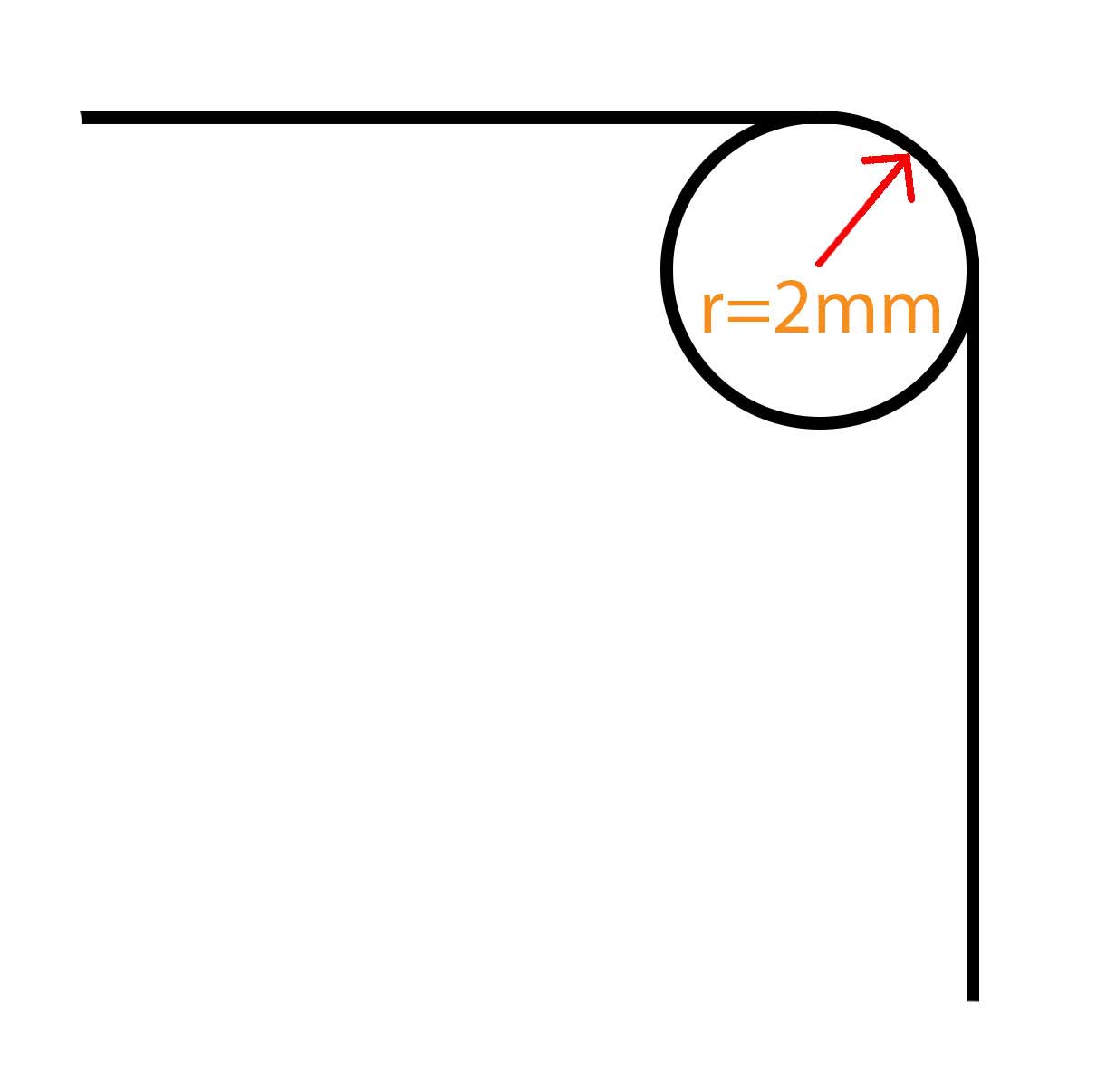
The Wet Film Wheel
The Pfund Gauge
The solution to this problem is the wet film wheel. The wet film wheel consists of three connected discs; the outer two are concentric and the middle one is eccentric. One outer disc is marked with the scale for measuring. These wheels come in different measurement ranges from 0 - 25μm (0 - 1 mil) to 0 - 3000μm (0 - 120 mils).
1: The wheel is placed into the wet film with the highest value at bottom dead centre. In Figure 5, this would be the 500 value.
2: The wheel is then rolled through the paint towards the zero value. The reason the wheel is rolled from the high value to the zero value is to prevent the surface tension of the paint from affecting the measurement.
3. Where the paint first comes into contact with the eccentric centre disc, the thickness value is read off the scale.
A long, flat surface or cylindrical shape is required in order to obtain a measurement, but it is more accurate than the combs. To aid the use of the wheel, it can be attached to a handle to improve access to hard-to-reach surfaces, making measurement taking easier. When the coating on a slippery or fast moving surface is to be measured, for example in the coil coating process, then a wet film wheel with knurled outer wheels is available.
An alternative to the combs and the wheel is the Pfund gauge.
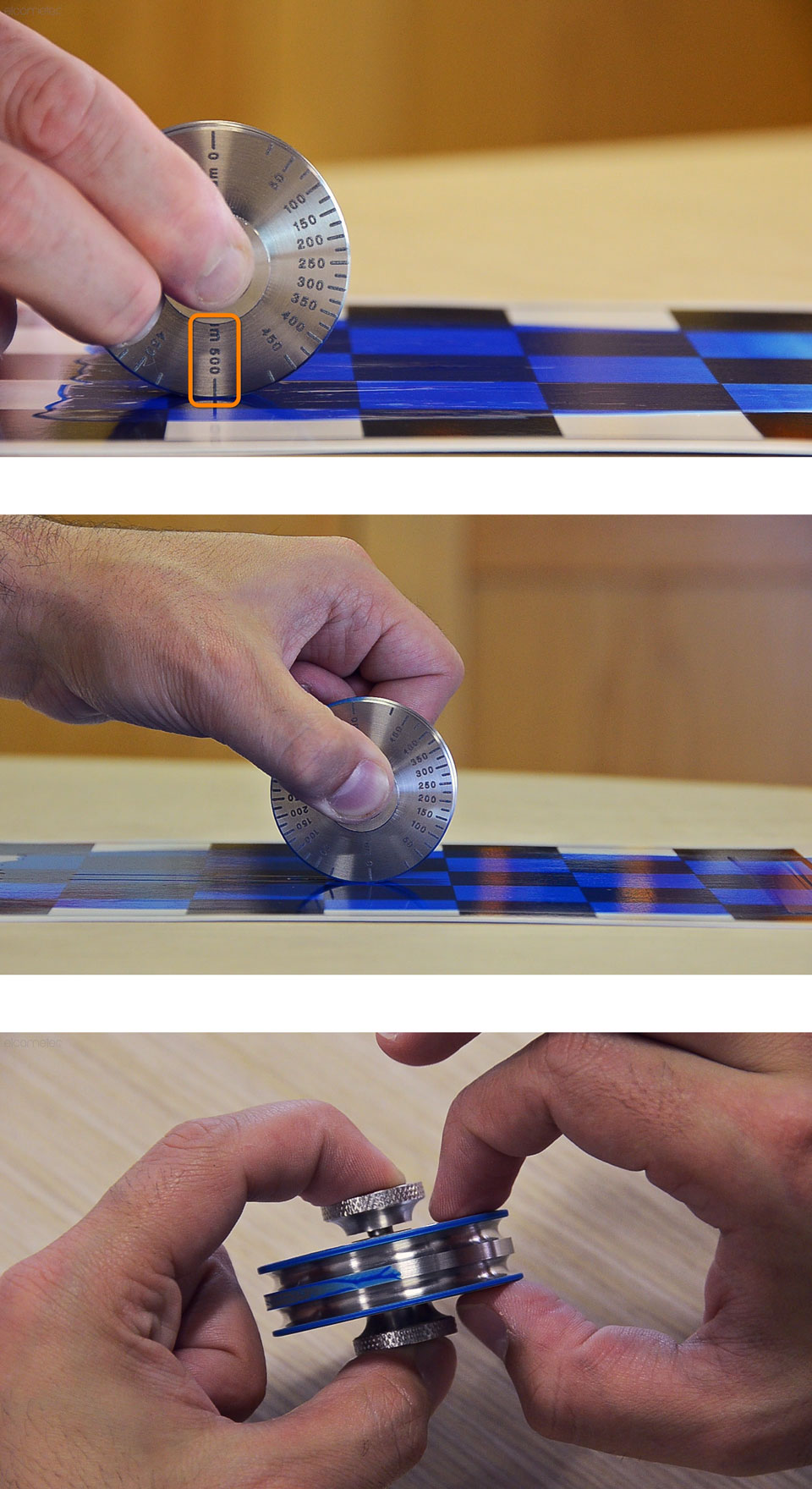
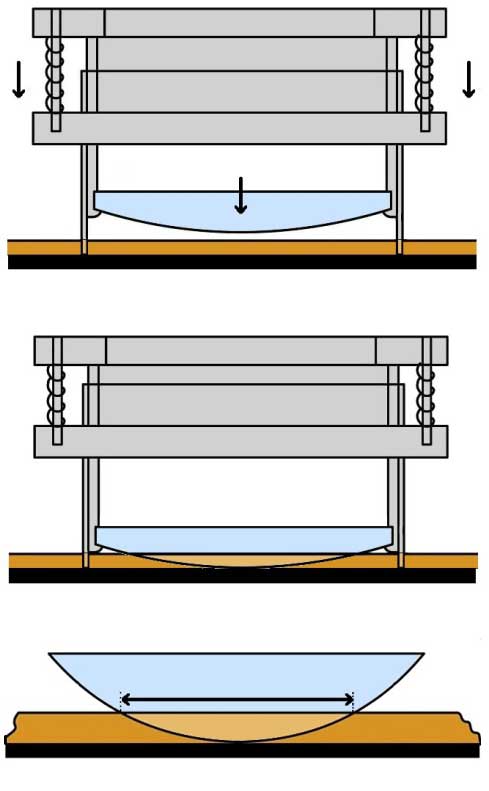
The Pfund gauge is ideal for measuring the thickness of clear coatings, as the previous two methods would leave no visible trace on the teeth or wheel. Whilst the Pfund gauge provides a very accurate measurement of film thickness, it is not ideal for site work, it is more suited to the lab due to the use of a glass lens.
The Pfund gauge consists of two concentric cylinders, the inner one of which has a curved glass lens at its base. When the inner cylinder slides inside the outer one and is pushed into the wet film, the film leaves a circular trace on the lens.
When the inner cylinder slides inside the outer one and is pushed into the wet film, the film leaves a circular trace on the lens. The diameter of the trace is measured and the wet film thickness is assessed by converting this diameter into a thickness measurement using the supplied conversion chart.
How Elcometer Can Help
Applying too much coating can cause a whole host of issues. It can crack as it cures, waste time and materials and it can affect the performance and finish of your product.
On the flip side, applying too little coating could risk the substrate not adequately being protected. To get the wet film thickness measurements just right, browse our range of wet film thickness measurement tools to find the right one for your project.
